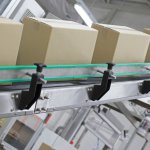Healthcare RPA could boom with COVID-19 ‘tailwinds’

- The healthcare industry could see an RPA ‘takeover’ as organizations look to streamline operations and save costs
- These tools are quick to integrate with existing tools and systems to help handle repetitive, admin-heavy tasks
Healthcare systems around the world are overburdened. That means the sector is in a constant quest to exploit new advances in technology to alleviate some of that strain. Add to that the unprecedented pressures of the COVID-19 pandemic, and the healthcare sector is ready to invest aggressively in technology that can help save costs and streamline operations.
According to research by Gartner, half of US healthcare providers will invest in Robotic Process Automation (RPA) in the next three years, up from just 5% today. This massive surge in uptake would be driven by “a perfect storm of shrinking payments, improving outcomes, enhancing patient experience and bolstering innovation credentials,” read the report.
“Cost optimization is a consistently recurring theme among healthcare providers,” said Dr. Anurag Gupta, research vice president at Gartner.
“The money that RPA saves by not having to spend as much on an unreformed process translates into cash that is available for front-end clinical functions, which is especially important while healthcare organizations combat the COVID-19 crisis.”
RPA is a combination of user interface recognition technologies and workflow execution that mimics the mouse-clicks and keystrokes of a human to drive applications and execute system-based work. The focus of RPA in the healthcare industry, like in any other, is to free up workers from repetitive, admin-heavy tasks and processes where possible, enabling them to focus on other higher value tasks.
The benefit of RPA is that it can be applied to existing front and back-end processes without the need to start designing or building a tool or process from scratch, since it replicates the path a human would take. These script-based robots can therefore automate many of the routine, repetitive tasks that professionals and medical practitioners spend their time on, including data entry and migration, patient scheduling, billing and claims processing and adjudication of insurance claims.
A study by the Annals of Internal Medicine found that primary care physicians spend 27 percent of their time on direct patient care but an amazing 49.2 percent on administrative activities. In effect, for every hour a physician provides direct clinical face-time to patients, they spend 2 hours on record keeping. RPA can help to unlock this time.
In the UK, the NHS has already employed RPA to reap the benefits of a ‘digital workforce’. Just one application of the technology, shared with TechHQ last year, reduced the time it takes medical secretaries to process GP referrals, removing the need to process paperwork and upload data between different IT systems.
With this approach, the facility in question released more than 500 hours of medical secretaries’ time within three months of implementing the automation and saved £220,000 (US$270,000) in associated direct costs, all of which can be channelled towards more pressing causes.
YOU MIGHT LIKE

RPA is good, but RPA-as-a-Service is better
The project was implemented from start to finish within 6 weeks, and cost less than half of what was initially expected. According to the Institute of Public Policy Research (IPPR), automation could save the NHS, as a whole, up to GBP12.5 billion (US$16.33 billion) a year, the equivalent of 10% of its annual budget.
While RPA’s relatively low cost and quick implementation could see it one of the key technologies adopted in the mid-term, Gartner acknowledges that it is just one of a number of emerging AI technologies that is helping healthcare organizations. By 2023, 20% of all patient interactions will involve some form of AI enablement within critical or nonclinical processes, up from less than 4% today.
The need to unlock the hidden insights in patient data and enable better decision making is also driving the demand for AI cloud services, which is why more than one-third of all healthcare workloads will be in the cloud by 2023. Using cloud-based AI, healthcare providers can predict upcoming patient needs and identify optimum interventions, before the patient’s condition starts deteriorating.
Cloud-based as-a-service solutions have become the preferred strategy for CIOs who need to innovate while controlling costs by converting capital expenditure outlays to operating expenditures.
“This strategy offers healthcare providers better leverage to spend on higher-value objectives, such as evidence-based decision-making capabilities that solve business problems and challenges like the coronavirus pandemic,” said Dr. Gupta.









